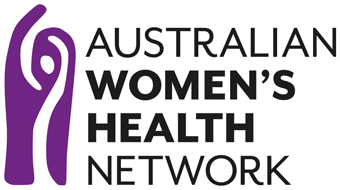Posts
Women and NonCommunicable Diseases (Chronic Conditions)
Publisher: Australian Women’s Health Network, 2014
Status – CURRENT
This position paper examines the gender dimensions of non-communicable diseases, such as cancer, cardiovascular disease, diabetes, chronic respiratory conditions, and musculo-skeletal condition, to raise awareness, and to inform prevention and treatment guidelines. Building on the inequities for women documented in the AWHN Position Paper on Women’s Health and Wellbeing,this paper highlights the specific areas where gender blindness is occurring and the areas where change is needed.
WOMEN’S HEALTH: MEANINGFUL MEASURES FOR POPULATION HEALTH PLANNING
Publisher: Australian Women’s Health Network, 2013
Status – CURRENT
The aim of this project was to create agreed national key performance indicators for women’s health for inclusion in population health planning data collection and analysis and to improve health outcomes by recognizing and understanding the role gender plays in men’s and women’s health.
Women and health and well-being : position paper
Published: Australian Women’s Health Network 2012
Status – CURRENT
Women in Australia have fewer financial resources, less wealth and property, and higher family burdens in the dual economies of paid and unpaid work than their male counterparts. They ensure the reproduction, well-being and survival of others, from newborn to old age, but often lack necessary support and financial independence. There are specific groups of women whose health is significantly compromised by their exposure to risk and social experiences. In particular, the poor standard of health of Indigenous women, refugee women and women with disabilities raises concerns about the capacity of health services to meet their needs. This paper considers the means by which Australian health programs and policy can redress these inequities. It further highlights the inequities for women in relation to non-communicable diseases (chronic diseases). The social gradient, the health sector, and gender are key determinants of health equity for women. The health sector in Australia has a responsibility to improve equity; however, prevailing inconsistencies in its understanding of how gender impacts on women’s health outcomes currently inhibit effective action. The paper argues broadly for recognition of a number of principles essential to establishing a firm basis upon which to redress health inequities for women. [Executive summary, extract]
Aboriginal and Torres Strait Islander Women’s Health Strategy
Publisher: Australian Women’s Health Network, 2010
Status – CURRENT
The Strategy presented in this report was developed through the Australian Women’s Health Network Talking Circle in 2009-2010. Over 400 Aboriginal and Torres Strait Islander women were involved in the consultations. The Action Areas and Recommendations presented in this Strategy were raised and discussed by the women who contributed to the Talking Circle.
National Aboriginal and Torres Strait Islander women’s health strategy 2010-2013 [Consultation]
Publisher: Australian Women’s Health Network, 2010
Status – CURRENT
Aboriginal and Torres Strait Islander women experience the poorest health outcomes of any group of women in Australian society, and have a right to determine what their health system will look like. This strategy has been developed through extensive consultation with over 400 ATSI women during 2009-2010. It is intended to supplement other national and state/territory identified priorities and needs. Recommendations are grouped into four action areas: supportive environments; health service access and equity; women in the health workforce; and appointment of a national policy officer to implement the strategy.
Women’s health : the new national agenda : position paper
Publisher: Australian Women’s Health Network, 2008
Status – NOT CURRENT
The purpose of this position paper is to set out a new national agenda for women’s health in Australia. It does so by outlining the key arguments for making women’s health a priority of governments, health professionals and the broader community and proposes a framework and process through which this can be achieved.
Women’s health : the new national agenda : discussion paper
Published: Australian Women’s Health Network, 2007
Status – NOT CURRENT
Abortion Policy
Publisher: Australian Women’s Health Network, 2002
Status – CURRENT
The Australian Women’s Health Network recognises that access to safe termination of pregnancy services is an important women’s health issue but that there is a wide range of ethical and religious beliefs regarding abortion in the Australian community. Despite the diversity of views, the vast majority of Australians support a woman’s right to choose.
ABORTION AND BREAST CANCER POLICY
Publisher: Australian Women’s Health Network, 2002
Status – CURRENT
The Australian Women’s Health Network recognises that there is controversy about whether induced abortion increases the risk of breast cancer but that the best available evidence indicates that induced abortion does not increase a woman’s risk of breast cancer later in life.

